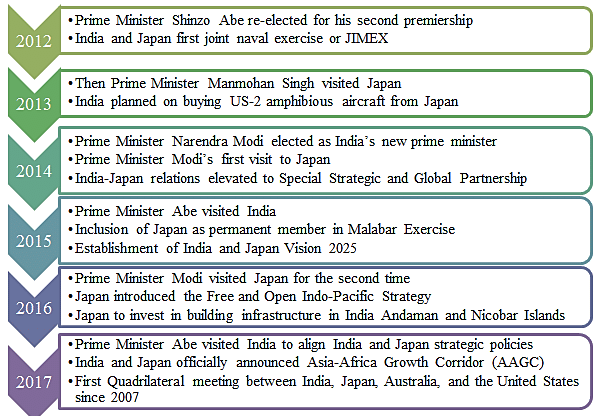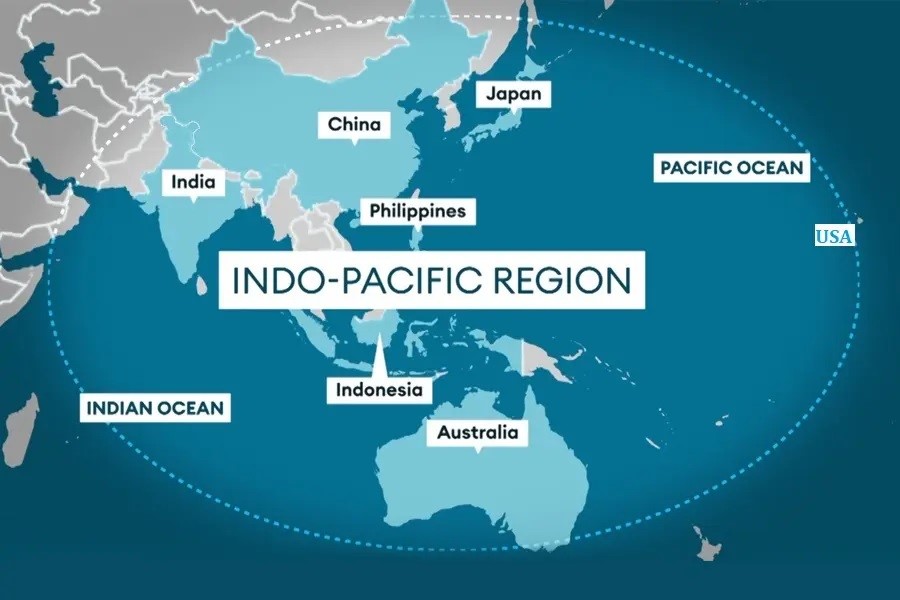The recent visit of Japanese Prime Minister to India reinforces the centrality of Japan in the emerging geopolitics of the Indo-Pacific.

To know about the significance of the Indo-Pacific for India, click here

|
Pillars |
Objectives of the pillar |
|
Principles for peace and rules for prosperity |
As vulnerable countries usually suffer the most if there is an erosion in the rule of law so Japan wants to engage in economic development programmes of such countries. |
|
Addressing challenges in an Indo-Pacific way |
Expansion of cooperation for the FOIP by incorporating realistic and practical projects in a wide range of areas, such as climate change, food security, global health and cybersecurity. |
|
Multi-layered connectivity |
Japan has identified three areas introducing more such projects on Southeast Asia, south asia and the south pacific/pacific island countries. |
|
Extending efforts for security and safe use of the “sea” to the “air” |
Japan will help in strengthening the capabilities of maritime law enforcement agencies in other countries. |
To address the following issues
References